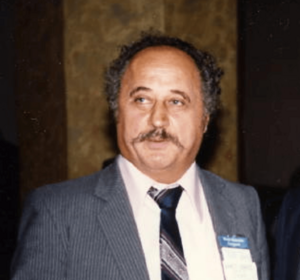Ernest Hondros facts for kids
Quick facts for kids
Ernest Hondros
|
|
|---|---|

Ernest Hondros in 1983 during VAMAS meeting at NPL
|
|
| Born |
Anastasios Demetrios Hondros
February 18, 1930 Kastelorizo, Greece
|
| Died | September 13, 2016 (aged 86) |
| Awards | A. A. Griffith Medal and Prize MAE |
| Scientific career | |
| Fields | Tribology |
| Institutions | National Physical Laboratory University of Melbourne |
Ernest Demetrious Hondros (born February 18, 1930 – died September 13, 2016) was an important British scientist. He studied materials and how they behave. He was also a visiting professor at Imperial College London.
Ernest Hondros's Life Story
Ernest Hondros was born in a place called Kastelorizo in Greece. When he was young, he moved to Queensland, Australia, where he grew up.
He went to the University of Melbourne and earned a special degree called a Doctor of Science (DSc). This degree shows he did a lot of advanced research. Later in his career, he became the Director of the Petten Establishment. This was part of the Joint Research Centre, which is a big science organization.
Awards and Special Recognition
Ernest Hondros received many important awards for his work. These awards show how much his scientific contributions were valued.
- He was chosen as a Fellow of The Royal Society (FRS). This is a very high honor for scientists in the UK.
- He was also made a Companion of the Order of St Michael and St George (CMG). This is an award given by the British monarch for service.
- He received honorary Doctor of Science degrees from the University of Melbourne and the University of London. An "honoris causa" degree means it's given to honor someone's achievements, not because they studied for it.
- He also received a special Doctor's degree from the University of Paris in France.
- He was made an honorary member of the French Society of Metallurgy.
- He won the Rosenhain Medal from the Metals Society in the UK.
- He also received the Howe Medal from the American Society of Metals.
- Another award he received was the A. A. Griffith Medal and Prize.

